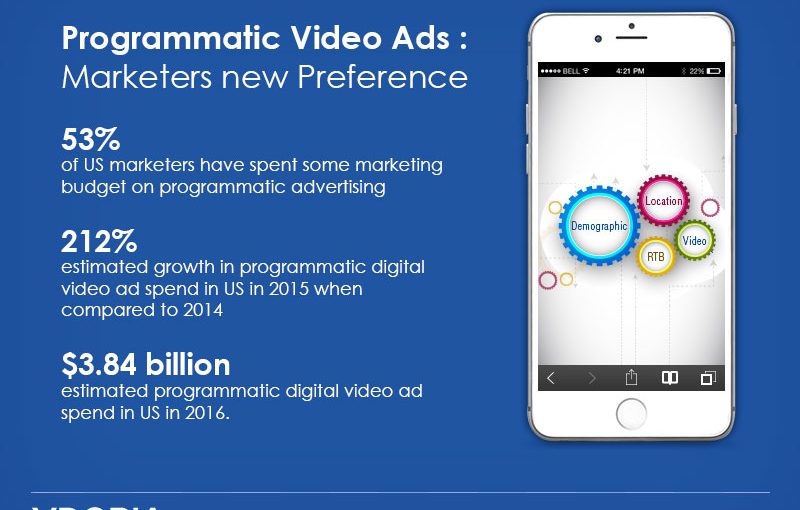If you’ve heard of programmatic ad buying, you’ve likely heard that the technology is exploding, and that it has become a key strategy in the future of advertising, including for mobile. Business Insider estimates that by 2018, mobile will account for about $6.8 billion in real-time bidding digital ad sales—a massive jump over an estimated $1.4 billion by the end of this year.
So what is programmatic advertising?
Programmatic advertising, or ad buying, refers to advertisers or companies using real-time first and third party data to decide which digital ads to buy. This enables increased efficiency in ad buying, removes the human unreliability element, and opens up human ad buyers to focus on planning campaigns rather than having to deal with more mundane tasks that computers can now take care of.
What does this mean for mobile advertising?
A significant portion of the growth of programmatic advertising comes from mobile. In 2014, mobile accounted for about 44% of all U.S. programmatic display ad spending, and eMarketer predicts that mobile will surpass the desktop this year to become the No. 1 generator for programmatic ad spending. This shift to mobile comes as no surprise to marketers, as the shift of the overall display ad market is shifting to mobile as well.
How brands stand to benefit
According to ExchangeWire, brands can benefit from mobile programmatic advertising in two ways. Brands can keep pace with changes in advertising, and they can formulate a real-time understanding of their audiences.
It’s no secret that brands’ audiences as a whole are moving to mobile as a primary mode of accessing digital content—and thus accessing digital advertisements. As a result, brands’ ad campaigns need to have a more significant mobile component than ever.
But because of the unique intelligence that mobile provides, such as geolocation and browsing history, programmatic advertising ends up being the fastest, most efficient, and in many cases cheapest way for brands to learn more about their target audiences.
With the benefit of this additional knowledge, brands can better target advertising to their audiences to increase return on investment and generate the leads and sales they’re after. The sooner brands adapt to mobile programmatic advertising, the sooner they’ll reap the benefits.

